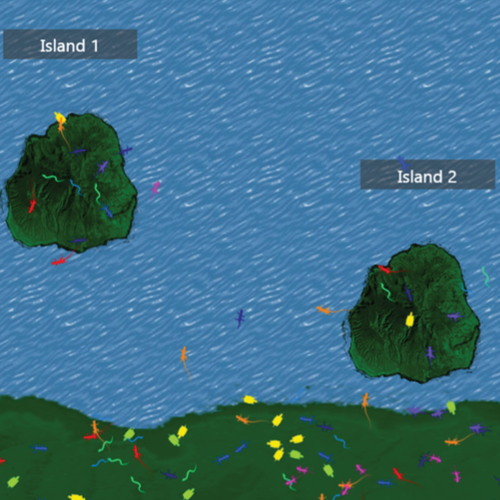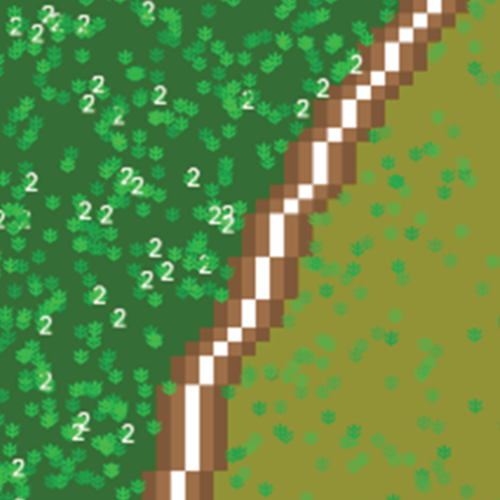
A Reflection of Health
The concept of “biological diversity” is multifaceted and complex. It includes the concept of species diversity, or the total of all species in a given area or habitat, but can also refer to genetic diversity within a species. Biodiversity can even refer to the diversity of habitats in a given region. Biodiversity is important as it reflects the environmental health of a species, region, or habitat. On a global scale, biodiversity is being lost at an alarming rate, largely due to habitat destruction. In this section there are models that explore biodiversity equilibrium, and provide data for various estimates of biodiversity.

Model 1 – Island Biogeography
This model simulates MacArthur & Wilson’s 1963 Island Biogeography Equilibrium paper. You can run virtual experiments manipulating the following: island size, distance from mainland, habitat type, and species types (e.g. birds, arthropods, etc.).
Directions and background information are embedded in the model exercise.
Share this model with others.

Model 2 – Estimating Stream Diversity
This model is loosely based on the water quality monitoring procedure of the Save Our Streams project of the Izaac Walton League of America. The underlying premise is that water quality affects the biodiversity of a stream. Thus, surveying the macroinvertebrates in a stream is a way to indicate water quality.
Share this model with others.

Model 3 – Estimating Plant Biodiversity
This model simulates plants present in two habitats that are separated into a southeast-facing xeric slope and a northwest-facing mesic slope. These species represent wildflowers common to the southern Appalachians, with some being more characteristic of mesic habitat, others more characteristic of xeric, and some that may be found in both. With this model you can set up different sampling protocols to compare and contrast the biodiversity of the two habitats.
